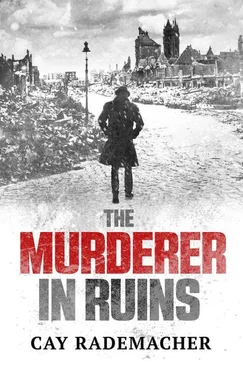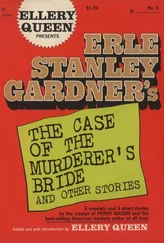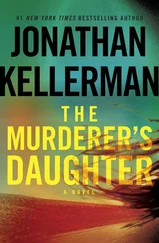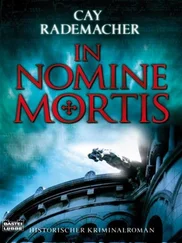Cay Rademacher - The Murderer in Ruins
Здесь есть возможность читать онлайн «Cay Rademacher - The Murderer in Ruins» весь текст электронной книги совершенно бесплатно (целиком полную версию без сокращений). В некоторых случаях можно слушать аудио, скачать через торрент в формате fb2 и присутствует краткое содержание. Год выпуска: 2015, ISBN: 2015, Издательство: Arcadia Books Limited, Жанр: Триллер, на английском языке. Описание произведения, (предисловие) а так же отзывы посетителей доступны на портале библиотеки ЛибКат.
- Название:The Murderer in Ruins
- Автор:
- Издательство:Arcadia Books Limited
- Жанр:
- Год:2015
- ISBN:9781910050750
- Рейтинг книги:5 / 5. Голосов: 1
-
Избранное:Добавить в избранное
- Отзывы:
-
Ваша оценка:
- 100
- 1
- 2
- 3
- 4
- 5
The Murderer in Ruins: краткое содержание, описание и аннотация
Предлагаем к чтению аннотацию, описание, краткое содержание или предисловие (зависит от того, что написал сам автор книги «The Murderer in Ruins»). Если вы не нашли необходимую информацию о книге — напишите в комментариях, мы постараемся отыскать её.
The Murderer in Ruins — читать онлайн бесплатно полную книгу (весь текст) целиком
Ниже представлен текст книги, разбитый по страницам. Система сохранения места последней прочитанной страницы, позволяет с удобством читать онлайн бесплатно книгу «The Murderer in Ruins», без необходимости каждый раз заново искать на чём Вы остановились. Поставьте закладку, и сможете в любой момент перейти на страницу, на которой закончили чтение.
Интервал:
Закладка:
‘CID. I need to speak to Professor Burger-Prinz. Immediately.’
She recoiled in shock and distress as if nobody had ever spoken to her in that tone before. For a few moments the expression of disgust vanished from her face, then she got to her feet and disappeared behind a leather-upholstered door.
Stave didn’t have long to wait. He was led through the door into another world, a big room with door-height windows looking out on to the Alster, a desk, three armchairs and an actual couch. None of it, however, was really English but it all looked somehow modern, and at the same time strangely old-fashioned, as if it dated back to before the war. Probably from the Bauhaus movement, Stave reckoned. The armchairs were cubes of chrome and black leather, the couch looking as if it had been poured out of the same materials. Probably very comfortable, the chief inspector thought, though on the other hand it looked a bit like the table Dr Czrisini used to dissect corpses on. But then this one was used for dissections too, in a manner of speaking.
The walls were white, a single painting hanging opposite the windows: oblique black streaks on an ochre background. Modern art, Stave supposed. The parquet floor was polished. On a sideboard by the middle window was a sculpture of a sitting man, Asian-looking. Buddha maybe? There were no certificates or diplomas hanging on the walls, no family photo on the desk. No telephone.
Once upon a time Stave had seen a photograph of Sigmund Freud in a book and was subconsciously expecting to see someone who looked like him. Instead the man approaching him looked like something from a recruiting poster for the SS. Professor Burgen-Prinz was about 1.90 metres tall with short blond hair and the most luminous blue eyes Stave had ever seen, the colour of the water in a Norwegian fjord. The chief inspector felt they were looking straight through him.
‘Why do you need to see me so urgently?’ he said in the deep, perfectly modulated voice of a practised public speaker or singer. The psychologist held out his hand and took Stave’s in a firm grip.
Stave felt relieved when Burger-Prinz indicated they should use the armchairs rather than the couch. He apologised for the intrusion, then began to tell him about the victims, the places the bodies had been found, the few leads they had, the medallions with their strange symbols, about the missing person posters and the fact they had elicited no response. Dead people whom nobody missed. Strangulations. Bodies stripped bare. Ruins, charred walls. Thin layers of snow on cement.
The psychologist let him speak without interrupting. He just watched him with those irritating eyes, took no notes, just sat there in his armchair, relaxed and attentive at the same time. Maybe my tale has got to him, Stave thought, at least awakened his professional interest. Or maybe he just knows how to pose.
‘I read the story about this rubble murderer,’ the psychologist said eventually, when Stave dried up. ‘In Die Zeit . And the photos of your victims are everywhere.’
‘Can you see some kind of pattern in it?’ Stave asked. ‘Do the murders tell us anything about the murderer? Something we might have missed? What is there that links murders, apart from the method? I’m desperate for some sort of lead.’
‘That’s everything you know?’
‘That’s everything I know.’
Burger-Prinz frowned. ‘I hope you’re not expecting me to give you an answer just like that to a case that an experienced criminologist such as yourself has been working on in vain?’
‘Maybe you might recognise some sort of pattern,’ Stave said. ‘Maybe in the choice of the places our unknown perpetrator leaves his victims. Or maybe the victims he chooses themselves.’
The psychologist stood up, walked over to his desk, took a city map of Hamburg out of a drawer and studied it. ‘Ruins, working-class districts, three of them east of the Alster, one west. Cellars, lift-shafts, bomb craters. Your killer is content just to hide the bodies. That’s enough for him.’
‘What do you mean?’
‘He’s not trying to get rid of them forever. Just for long enough for him not to be caught.’
‘Hardly surprising. All of the victims, possibly except for the last – we’re still waiting for the autopsy report – were killed on the same day, the twentieth of January.’
‘But they might not all have been put where they were found on that day.’
Stave stared at him. ‘You mean somebody kills all these people, then keeps their bodies somewhere and only disposes of them one by one?’
Burger-Prinz gave him an indulgent smile. ‘It’s cold enough. And your unknown perpetrator wouldn’t be the first killer to move bodies around days or weeks after their murder.’
‘You think somebody’s playing a sick joke on us?’
‘Maybe. But there might also be practical reasons for it. He can only carry one body at a time. Maybe he does it every night.’
‘Every night?’ The chief inspector closed his eyes.
‘One way or another, the killer is behaving rationally. He’s thought it out. There is also something in common in each case. The bodies left in the east were all near the main station whereas the one left in the west was near Dammtor station.’
‘You think the murderer chooses his victims in trains? Or at the stations?’
‘Or kills them near a station. Then he hides the bodies in the ruins nearby.’
‘But all of them on one day? Four bodies, two stations? The trains only run during the day. The stations are abandoned from eight in the evening. If our murderer kills someone during the day, how does he manage to move the bodies to the ruins where we found them without being noticed? And if he only hides them at night, how could he have met them earlier at the station? Does he kill them somewhere in the daytime, then wait for hours on end to hide them somewhere in the dark? Doesn’t sound likely.’
‘It would be possible if his victims were on the last train. A train arriving at 5.30 p.m. pulls into a station that is already dark. Very dark. And in this cold already empty. Let’s imagine he killed the old man at Dammtor station, and the three females at the main station. It’s not impossible.’
‘You think he’s an experienced killer?’
Burger-Prinz thought for a moment. ‘Maybe our murderer deliberately chooses weaker victims,’ he mused.
Stave just looked at him blankly.
‘Maybe he picks the person on the train he thinks will be easiest to deal with. A woman. A child. An old man.’
The chief inspector thought of the endless hours he had spent at the station, staring at the incoming carriages, the thousands of people pushing past him. He shook his head. ‘Might have been the case with the girl, even the old man. But it doesn’t work for the two women. There’s no train these days where a woman would be the easiest victim. There are always children on the move, and old people and war wounded.’
Then he hesitated. Something had occurred to him. ‘The old man was the only victim to have been beaten, badly beaten at that, as far as the pathologist could make out. But of the four victims he was in no way the strongest or most mobile. Both women would definitely have been able to put up more of a defence or been able to run away more easily.’
The psychologist smiled. ‘I see what you’re getting at: a family. Somebody has a vicious hatred of one family, possibly even his own. So they all have to die. But the old man, the patriarch, he deserves to suffer the most and so the murderer beats him before strangling him.’
Stave nodded. ‘Obviously it could just be a coincidence. Maybe the murderer wanted to strangle them all without giving them any opportunity to defend themselves. Maybe he creeps up behind them. But in the case of the old man alone, something went wrong, something beyond his control. And so he had to lay into him. But even if we go with that, it’s not chance that…’
Читать дальшеИнтервал:
Закладка:
Похожие книги на «The Murderer in Ruins»
Представляем Вашему вниманию похожие книги на «The Murderer in Ruins» списком для выбора. Мы отобрали схожую по названию и смыслу литературу в надежде предоставить читателям больше вариантов отыскать новые, интересные, ещё непрочитанные произведения.
Обсуждение, отзывы о книге «The Murderer in Ruins» и просто собственные мнения читателей. Оставьте ваши комментарии, напишите, что Вы думаете о произведении, его смысле или главных героях. Укажите что конкретно понравилось, а что нет, и почему Вы так считаете.











